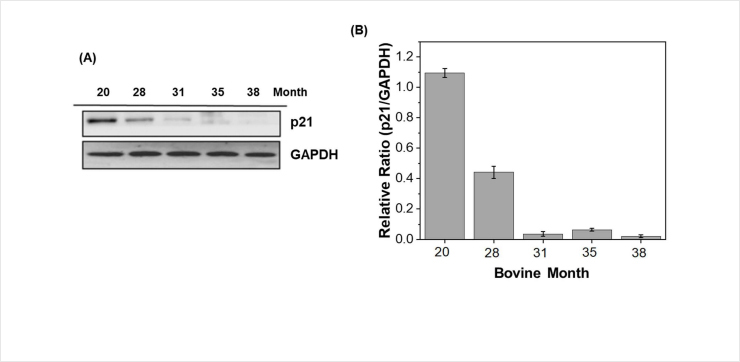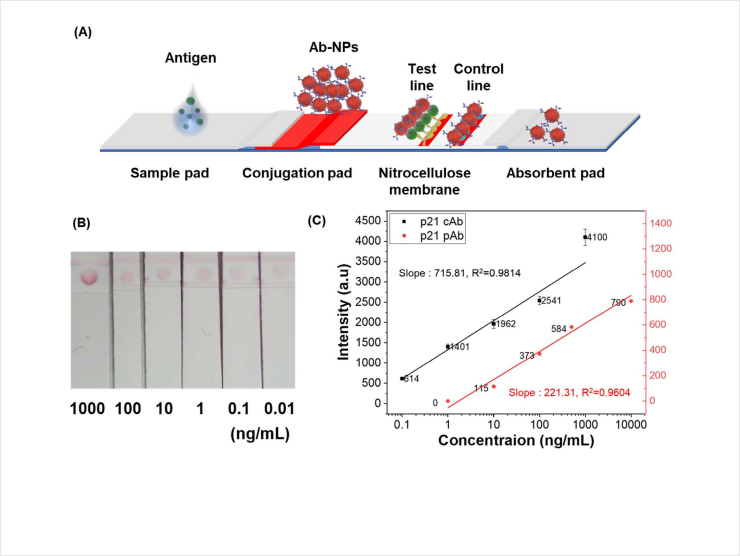Representative Research Publications
Diagnosing Mad Cow Disease Risk in 10 Minutes Using Cattle Age Biomarker 2025 > Representative Research Publications > Research Results Home
Diagnosing Mad Cow Disease Risk in 10 Minutes Using Cattle Age Biomarker
- Sens. Actuator B-Chem. / 2025. 2.
- BONGJIN JEONG (First author), Jong-Soon Choi (Corresponding author)
Research Summary
Dr. Jong-Soon Choi and Dr. Bong-Jin Jeong of the Korea Basic Science Institute have developed a rapid diagnostic technology that determines a cow’s age using a protein called p21, enabling fast identification of BSE (bovine spongiform encephalopathy, or mad cow disease) risk.
Mad cow disease is a serious neurodegenerative condition caused by the accumulation of abnormal proteins in a cow’s brain. Infected cattle exhibit neurological symptoms and eventually die. When humans consume meat from infected cattle, they may contract variant Creutzfeldt-Jakob disease (vCJD) — a rare and fatal neurodegenerative disorder.
Since cattle older than 30 months are more likely to develop risk-associated tissues, many countries worldwide restrict the import of beef from cattle over this age. However, current age verification methods—such as examining teeth or tissue biopsy—are time-consuming, expensive, and require specialized equipment.
The research team found that p21 protein levels decrease with age in cattle, and drop sharply after 30 months. Based on this, they established p21 as a biomarker for age determination. They then applied a lateral flow assay (LFA) technique to detect p21 quickly and easily in the field.
The sensor they developed can deliver results in under 10 minutes and is highly sensitive, detecting as little as 0.1 nanograms per milliliter — about ten times more precise than conventional methods.
If commercialized, this technology could enable rapid and accurate screening of beef for BSE risk, helping prevent potentially infected meat from entering the food supply.
Expected Outcomes
This technology enables rapid and accurate determination of cattle age, allowing for the preemptive screening of beef at risk for BSE before it enters distribution.
Compared to conventional testing methods, it is simpler and more cost-effective, significantly improving the efficiency of disease control systems and the practicality of on-site diagnostics.
It is expected to contribute to food safety and consumer trust by supporting compliance with domestic and international regulations on beef import and export.
Related Figures
 Fig. 1 Comparison of p21 protein expression in beef samples of various ages using bovine p21 antibodies. (A) Immunoblot analysis, (B) Quantitative analysis of p21 expression levels
Fig. 1 Comparison of p21 protein expression in beef samples of various ages using bovine p21 antibodies. (A) Immunoblot analysis, (B) Quantitative analysis of p21 expression levels
 Fig. 2 Fabrication of LFA chip and comparison of p21 expression in beef samples using two types of p21 antibodies. (A) Schematic diagram of LFA operation, (B) Results from paper-based chip measurements, (C) Comparison of sensitivity and detection limits between p21 polyclonal antibody (pAb) and capture antibody (cAb)
Fig. 2 Fabrication of LFA chip and comparison of p21 expression in beef samples using two types of p21 antibodies. (A) Schematic diagram of LFA operation, (B) Results from paper-based chip measurements, (C) Comparison of sensitivity and detection limits between p21 polyclonal antibody (pAb) and capture antibody (cAb)



